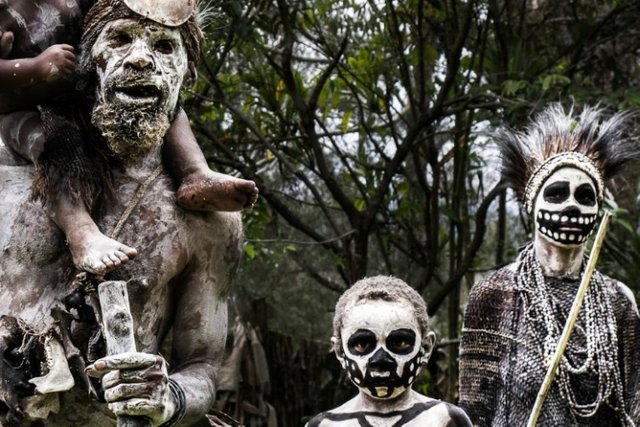Death from laughter, a disease that has already spread in Guinea, and the reason: cannibalism
OCTOBER 1996 In New Guinea in 1950, laughing death was not a laughing matter. Desperate to understand the disease, Australian physician Vincent Zigas wrote more appropriate prose for a Gothic novel than a medical treatise. "Was it an invisible miasm that killed these people? Was it an unknown epidemic influence of the atmospheric-cosmic-telluric nature, all pervasive, inexorable, infiltrating them, poisoning them, killing them?" (See "Death of laughter" in the bibliography).

New Guinea was, and is, a land of 700 tribes, a haven for stone-age cultures in the mysterious cloud-covered mountain rain forest.
Laughing, locally called kuru, was a progressive and fatal brain disease that robbed its victims of the ability to walk, speak, and even eat. He had killed dozens of Fore people from the highlands. At one point, suspecting that the cause was a genetic defect, Australian colonial rulers tried to confine the Fore to their homeland to prevent the spread of genes.
In 1960, when veterinary pathologist William Hadlow observed similarities between kuru and scrapie, embattled scientists studying the disease suddenly had a frame of reference for the disease.

Pink brain cells with white holes and black bodies.
Kuru infected the brain, showing the characteristic holes
Courtesy: The University of Iowa, Virtual Hospital Both diseases caused tremor, lack of coordination, and certain death. Like the scrapie, the kuru produced a Swiss cheesing of the brain.
But it was not the long medical research, but the social changes brought about by the introduction of Western technology, religion, and government that halted the epidemic, reducing deadly feuds between villages and curbing cannibalism.
Grandma mignon?
Why? Because the village rites honored close relatives, even kuru victims, by eating them after death. This novel understanding of the phrase "family dinner" transmitted the kuru infection while the bodies were handled or when the relative's remains were eaten.
A pink background with a white ring in the center and randomly spaced white spaces.
Brain mouse damaged by scrapie. Such cross-species work allows scientists to test the infectivity of prion diseases.
Lajos Laszlo, Eotvos University, Budapest, through the Department of Biochemistry, Nottingham University School of Medicine. Furious, the Fore had been reluctant to eat sick relatives for fear of death. Like others, they were fooled by the long incubation of the kuru, which obscured the link between dinner and illness. But when they began to blame the disease for witchcraft, they continued to eat dead relatives. In 1966, Carleton Gajdusek and Michael Alpers of the US National Institutes of Health. USA They transmitted kuru to chimpanzees by injecting infected brain tissue, demonstrating that the cause was not exclusively genetic and focusing attention on prevention.
As AIDS was later shown to be true, an incurable disease was highly preventable.
Prevention worked in New Guinea. The epidemic has subsided and no child born since cannibalism ceased has caught the kuru. In 1976 Gajdusek shared the Nobel Prize in Physiology or Medicine for the work.